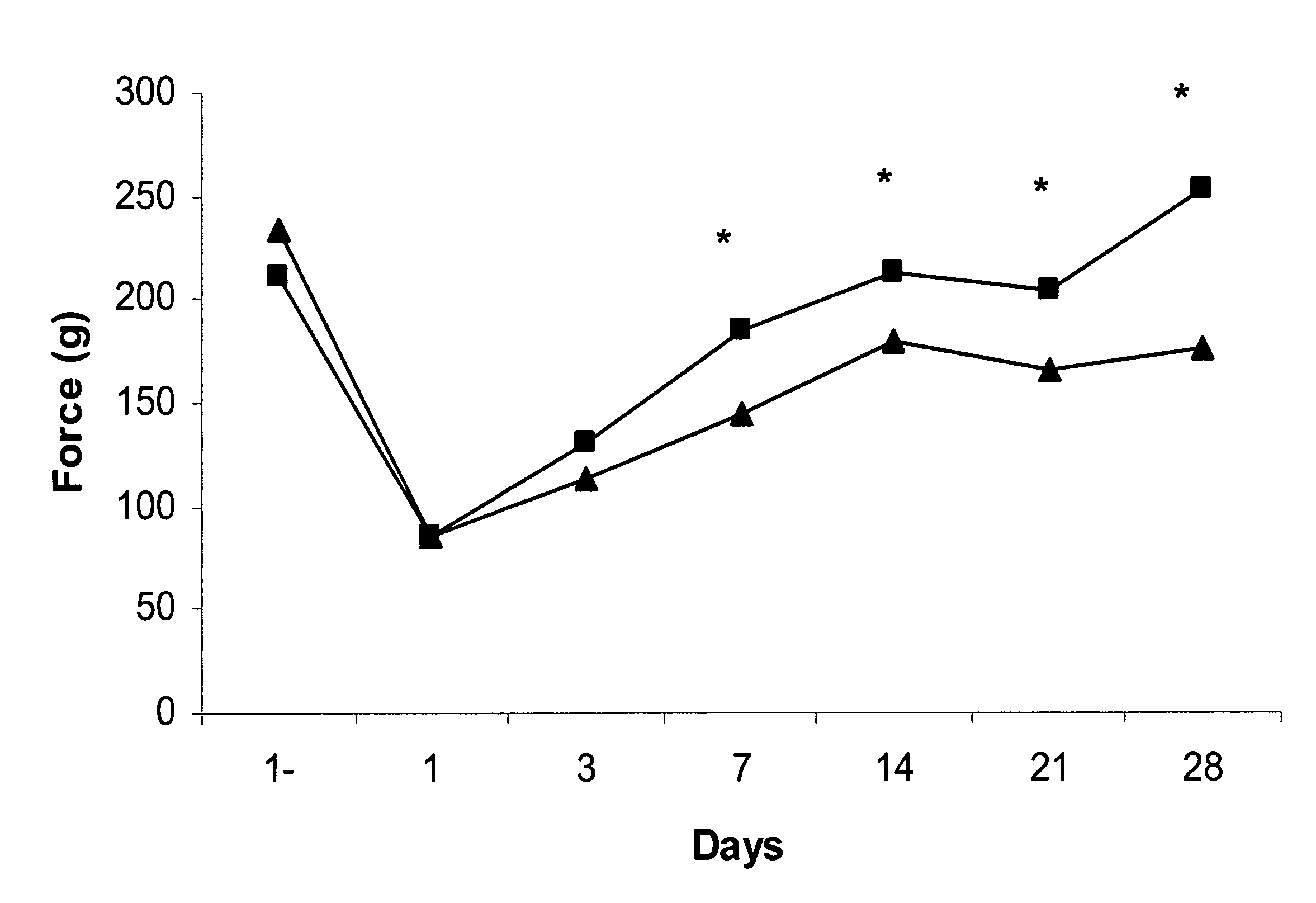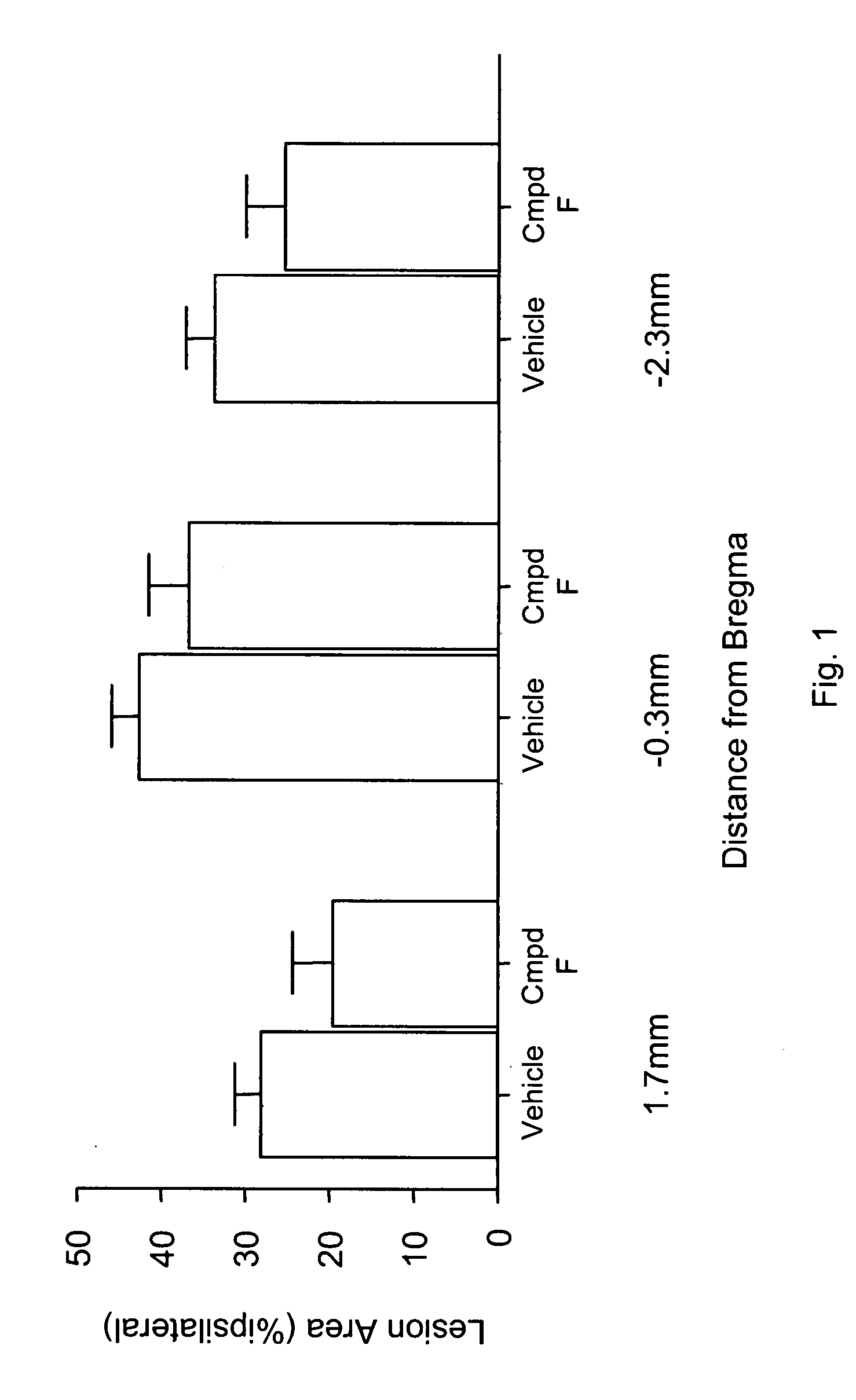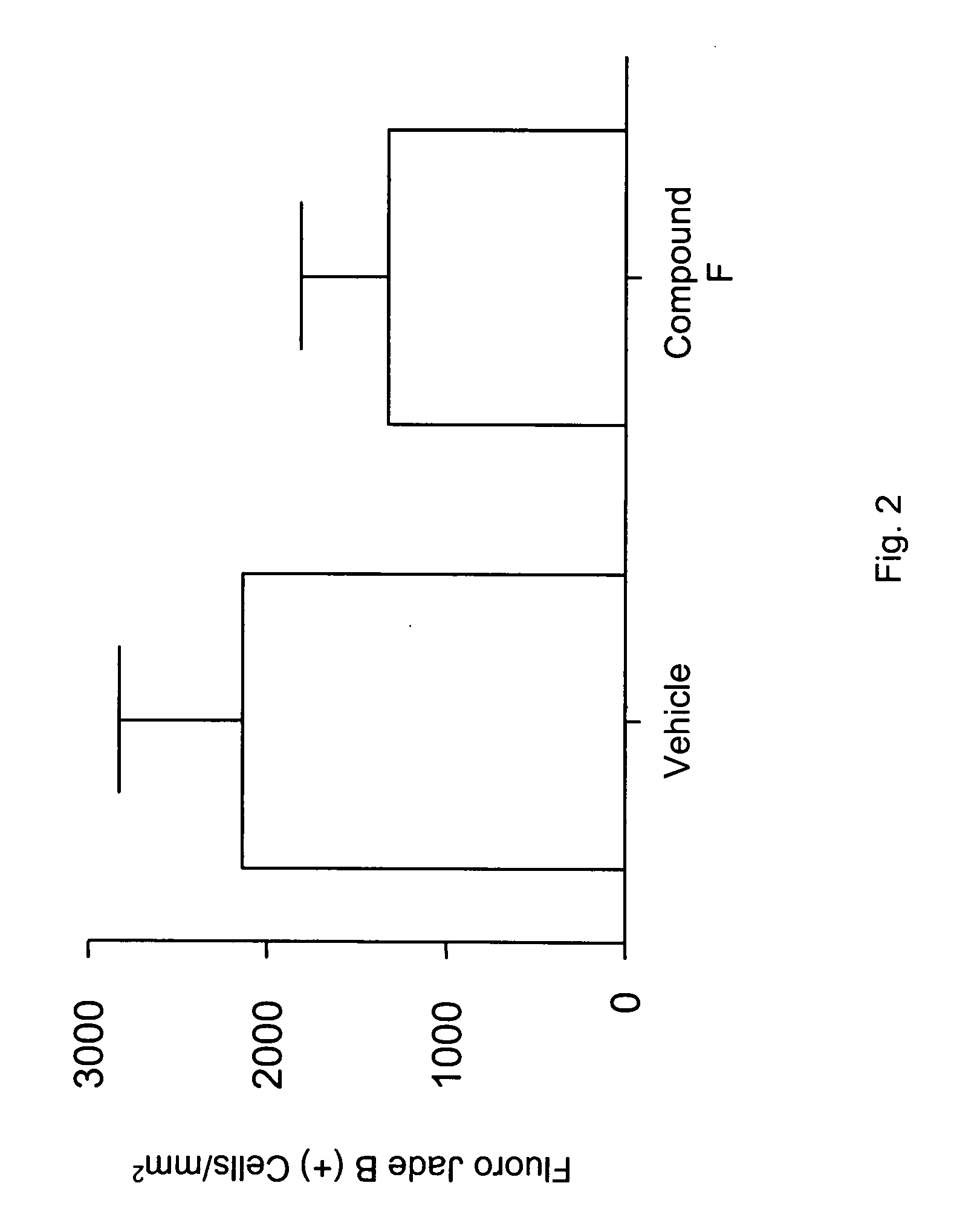Compounds and methods for treatment of stroke
a stroke and compound technology, applied in the field of stroke compound and method treatment, can solve the problems of death or sensorimotor and other defects, limited current pharmacotherapy for ischemic stroke, and administration of thrombolytics, and achieve the effect of reducing the delay
- Summary
- Abstract
- Description
- Claims
- Application Information
AI Technical Summary
Benefits of technology
Problems solved by technology
Method used
Image
Examples
example 1
Increased Expression of Cytoprotective and Neuroprotective Factors in Hep3B Cells
[0738] The effect of compounds of the present invention on expression of cytoprotective and neuroprotective factors in cells was evaluated as follows. Human cells derived from hepatocarcinoma (Hep3B) tissue (see, e.g., American Type Culture Collection, Manassas Va.) were seeded into 35 mm culture dishes and grown at 37° C., 20% O2, 5% CO2 in Minimal Essential Medium (MEM), Earle's balanced salt solution (Mediatech Inc., Herndon Va.), 2 mM L-glutamine, 0.1 mM non-essential amino acids, 1 mM sodium pyruvate, and 10% FBS. When cell layers reached confluence, the media was replaced with OPTI-MEM media (Invitrogen Life Technologies, Carlsbad Calif.) and cell layers were incubated for approximately 24 hours in 20% O2, 5% CO2 at 37° C. Various compounds of the present invention or 1% DMSO (negative control) were then added to existing media and incubation was continued overnight. Following incubation, the con...
example 2
Increased Expression of Cytoprotective and Neuroprotective Factors in Neuroblastoma Cells
[0739] The effect of compounds of the present invention on expression of cytoprotective and neuroprotective factors in neuroblastoma cells was evaluated as follows. Kelly neuroblastoma cells (see, e.g., DSMZ, cat# ACC-355, Braunschweig Germany) were treated with various compounds of the present invention or 1% DMSO (negative control). Following an overnight incubation, the conditioned media was collected from cell cultures and analyzed for erythropoietin (EPO) and vascular endothelial growth factor (VEGF) expression using a QUANTIKINE immunoassay (R&D Systems, Inc., Minneapolis Minn.) according to the manufacturer's instructions. As shown below in Table 2, addition of various compounds of the present invention to Kelly neuroblastoma cells resulted in increased expression of erythropoietin (EPO) and vascular endothelial growth factor (VEGF). These results indicated that methods and compounds of ...
example 3
Animal Dosing
[0740] The following guidelines were used to administer compounds of the present invention to the animal subjects in the studies described herein. Animals useful for measuring in vivo effects of compounds of the present invention include Swiss Webster male mice (30-32g), C57BL / 6 male mice (25-35g), db / db male mice (45-55g), Sprague Dawley male rats (200-350g), Wistar male rats (300-350g), and Lewis female rats obtained from Simonsen, Inc. (Gilroy Calif.), Charles River (Hollister Calif.), or Harlan. Animals were maintained using standard procedures, and food and water were available to the animals ad libitum. During treatment, animals were monitored for changes in body weight and signs of overt toxicity and mortality.
[0741] Compounds were generally administered orally by gavage (p.o.) or by intravenous (i.v.) administration. Animals treated by oral gavage received a 4-10 ml / kg volume of either 0.5% carboxymethyl cellulose (CMC; Spectrum, Gardena Calif.) with or withou...
PUM
| Property | Measurement | Unit |
|---|---|---|
| time | aaaaa | aaaaa |
| volume | aaaaa | aaaaa |
| time | aaaaa | aaaaa |
Abstract
Description
Claims
Application Information
 Login to View More
Login to View More - R&D
- Intellectual Property
- Life Sciences
- Materials
- Tech Scout
- Unparalleled Data Quality
- Higher Quality Content
- 60% Fewer Hallucinations
Browse by: Latest US Patents, China's latest patents, Technical Efficacy Thesaurus, Application Domain, Technology Topic, Popular Technical Reports.
© 2025 PatSnap. All rights reserved.Legal|Privacy policy|Modern Slavery Act Transparency Statement|Sitemap|About US| Contact US: help@patsnap.com



